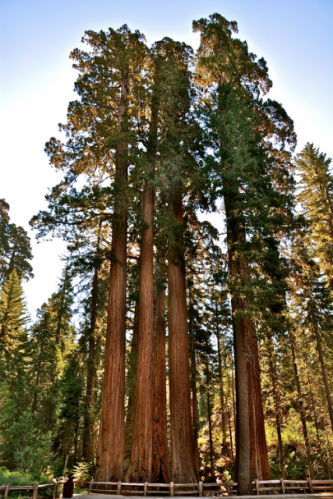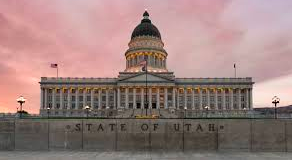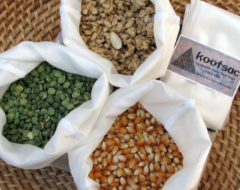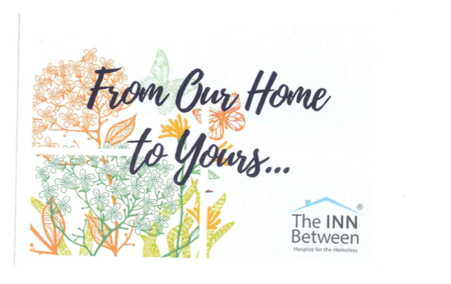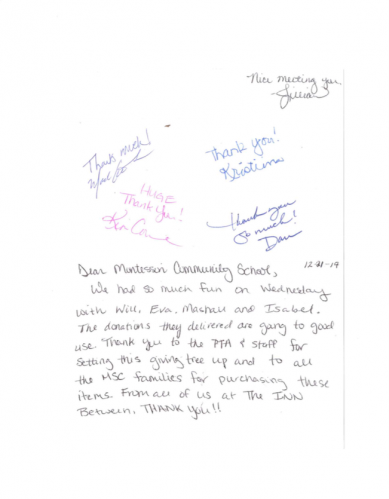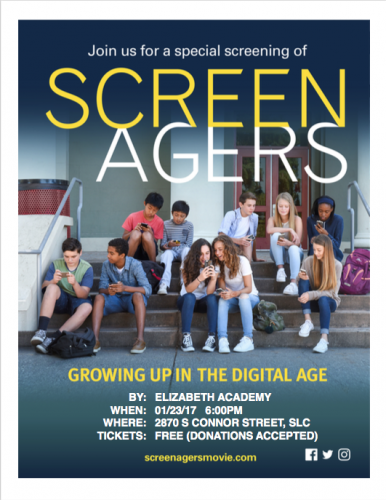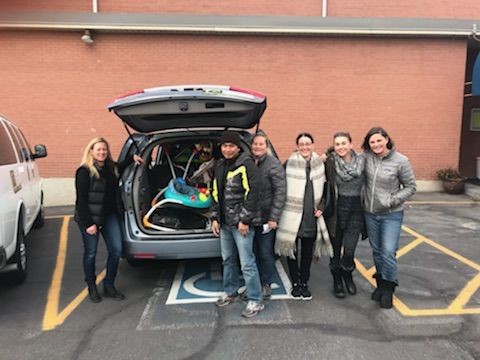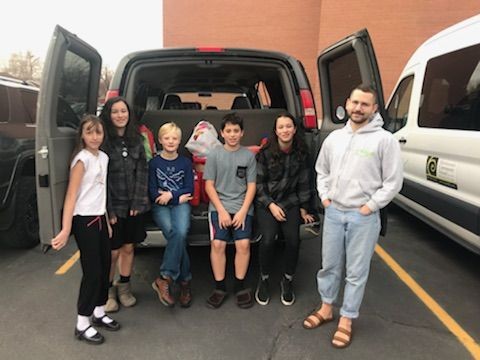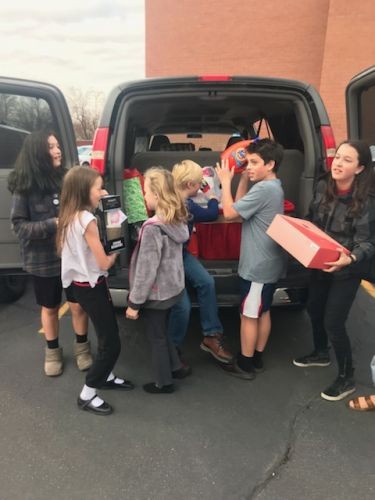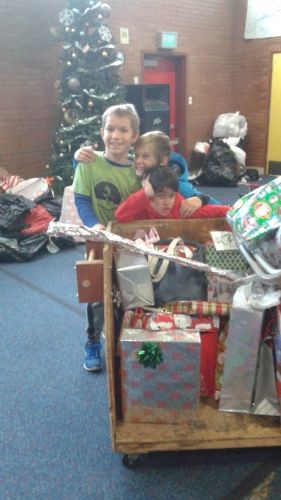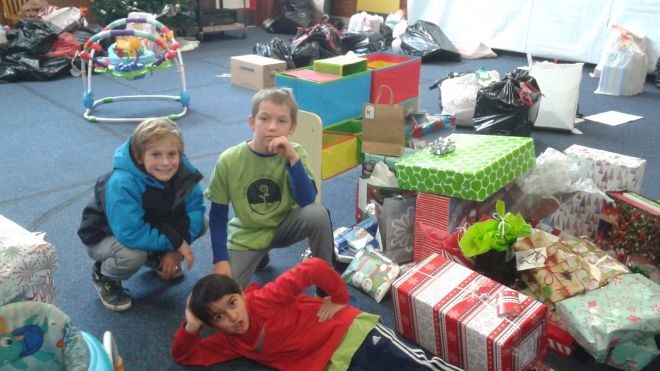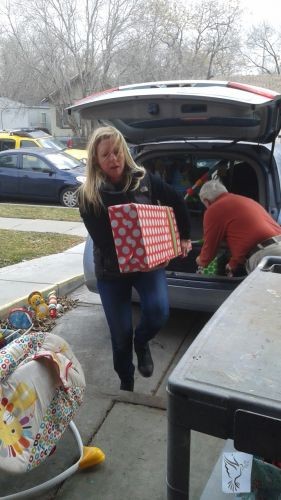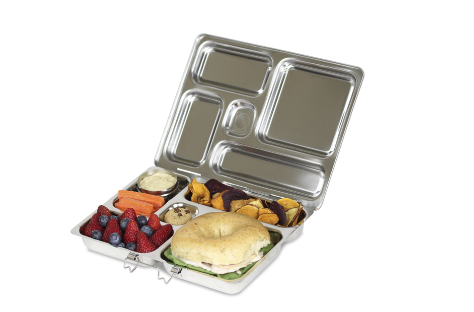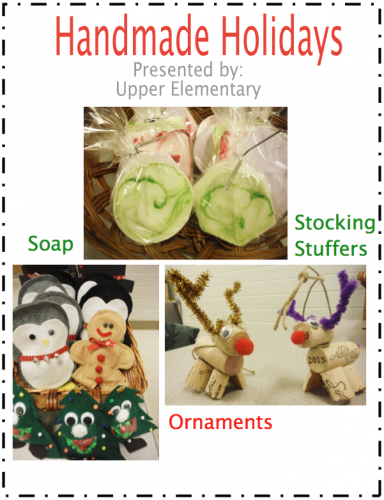Oftentimes when parents visit our school for a tour, they ask about our staff. How long have the staff been here? How often is there turnover of employees? Are the people who work here happy? While these are difficult questions to answer without the input of the teachers themselves, we often find ourselves describing the vision for community and how that applies to our staff. The human factor is strong in a community such as this where we have over 200 children, at least twice that many active parents, grandparents and guardians, and a total of 62 employees. With so many people under our roof, we have discovered that building community is essential to providing successful outcomes.
We strive to build community in a number of ways; including in and among classrooms, with parents, and as a staff. Below is an article written by one of our Lower Elementary teachers, Brandi Allen, who is currently working on her M.Ed. at Westminster College, wherein she describes how our staff community functions. It is because of the vision of the school owner and director that we strive to cultivate a community of awareness, kindness, support, and joy.
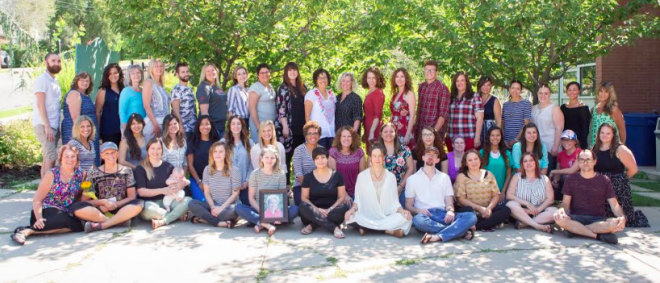
Exploration of Adult Development
In reading about the different theories of adult development, I was pleasantly surprised when I read the chapter on Indigenous Ways of Knowing. This theory felt familiar to me, as I have worked in a culture enriched with some of its components for over 20 years. It makes sense that this would be a theory used at my current workplace, Montessori Community School (MCS), as the owner/director/head of school is the descendant of a Māori chief from New Zealand.
Our head of school leads in a way that is inclusive and she sees a global picture. Our school name has community in it because her focus is on creating a productive group of individuals with an emphasis on the individual’s growth within the group dynamics. As stated on the website for MCS, “The mission of the Montessori Community School is to provide a rich, individualized educational experience, which guides and nurtures the natural unfolding of the whole individual and inspires a lifetime love of learning and peace” (2017). This fosters development through not only the children that we teach and work with, but also the faculty and staff.
There are many ways that staff members are encouraged to cultivate a cohesive faculty that cares for and works toward being integral parts of our school family. We have many dialogues between staff members to try and problem solve; we eat together, play together and care for one another creating relationships both in and out of the school. As Cajete (2015) states, “If our ways of knowing focus on relationships, as Indigenous cultures do, then we will choose to educate our people in ways that build relationships-in community. Relationships become the means, method, and context for learning” (p.197).
Each of our classrooms has at least two co-teachers that are in a relationship that reminds me a lot of marriage. We help cover each other as needed, we meet about the needs of our students, classroom and programs and make decisions together to make for a collaborative unit. It is important for us to see our connection to one other and realize that our actions impact the whole of our school. Many hours each week are spent with pairs, teams, and programs meeting to communicate about being more effective and compassionate Montessori community members. “Through the conversation, people form and reaffirm their values, their relationships, their ethics, their consciousness, and their communal experiences. They come to see things in a similar light, since the form of communication is specifically and culturally based” (Cajete, 2015, pp. 199-200). As with any family, members do not always agree. And there can be some strife between individuals that can take a lot of time and effort, to work on improving. Many of our teachers and staff have worked at the school over 20 years, which allows us to know one another better and work on our relationships while addressing difficult situations.
In addition to our director having a Māori lineage, the philosophy of Dr. Maria Montessori follows many parts of the Indigenous Ways of Knowing theory. Dr. Montessori refined her peace curriculum while she was exiled from her home in Italy escaping the rule of Mussolini and Hitler in the middle of the 1900s. She lived in India for many years with her son Mario contemplating how best to bring about social reform and peace through education (Trudeau, 2003, p. 4). Much of our teaching in the Montessori classroom comes from the idea of stories being told to show the connection of people, animals, the environment, the creation of the universe and humanities ability to better the world with their presence. This exposure to a nature based mythology rich curriculum ties into working with the theory. “An immense variety of myths, metaphors, and symbolic complexes present the nature-centered orientation of Indigenous epistemologies in the Americas.” (Cajete, 2015, p. 206)
Our school has staff members from Iran, Mexico, New Zealand, the United Kingdom, Ireland, Panama, Myanmar, Canada, as well as from all over the United States. This brings diversity to our community and draws on inclusiveness and understanding of other cultures. We are encouraged to be a part of this global citizenry that has a “holistic social context that upholds the importance of each individual as a contributing member of the community” (Cajete, 2015, p. 203). When I first met the director and her assistant director at the time (who is from Japan) I remember thinking this was a great opportunity to experience and work with a variety of individuals in one small school that seemed unique in Utah. It was so inspiring to meet people from around the world with their varied perspectives and cultures that they eagerly shared. I was able to learn about communicating and working with others from many different developmental experiences. As Taylor and Marienau point out, “social learning as a way to encourage adults to be open to seeing, relating to, and learning from those who are different from themselves” (p. 264, 2016) is important to an adult’s learning process.
In growing and learning in this environment for over 20 years, I feel that we are not only a unique educational facility, but that we are incorporating this dwindling way of knowing which seems so important at this point in time. It is my hope that MCS will continue to thrive and embody this enriching way of teaching, knowing and being.
A successful community is made up of a variety of different talents, strengths, skills and goals. As our students engage in peaceful conflict resolution, modeled by the adults in the community, they learn to function as many parts making up a whole. As they assist in the management of the environment, including caring for the physical space, taking on important leadership roles within the classroom, and engaging in group discussion about how to make change for the better, students practice life long skills of considering others and building functioning communities. (Peterson, 2017)
Brandi Allen, 2017
References
Cajete, G., PhD. (2015). Knowing, learning, and remembering-as communities.
Indigenous community: Rekindling the teachings of the seventh fire (pp.197-220).
St. Paul, MN: Living Justice Press.
Mission statement. (n.d.) Retrieved October 8, 2017, from http://mcsslc.com/about/mission-statement
Peterson, B. (2017). Creating a place for peace. Retrieved from http://mcsslc.com/blog/entry/creating-a-place-for-peace-1
Taylor, K., & Marienau, C. (2016). Facilitating learning with the adult brain in mind: a
conceptual and practical guide. San Francisco, CA: Jossey-Bass, A Wiley Brand.
Trudeau, C.M., S.N.D.de N. (2003). Montessori’s years in India. Junction City, OR: Louise Bogart.
